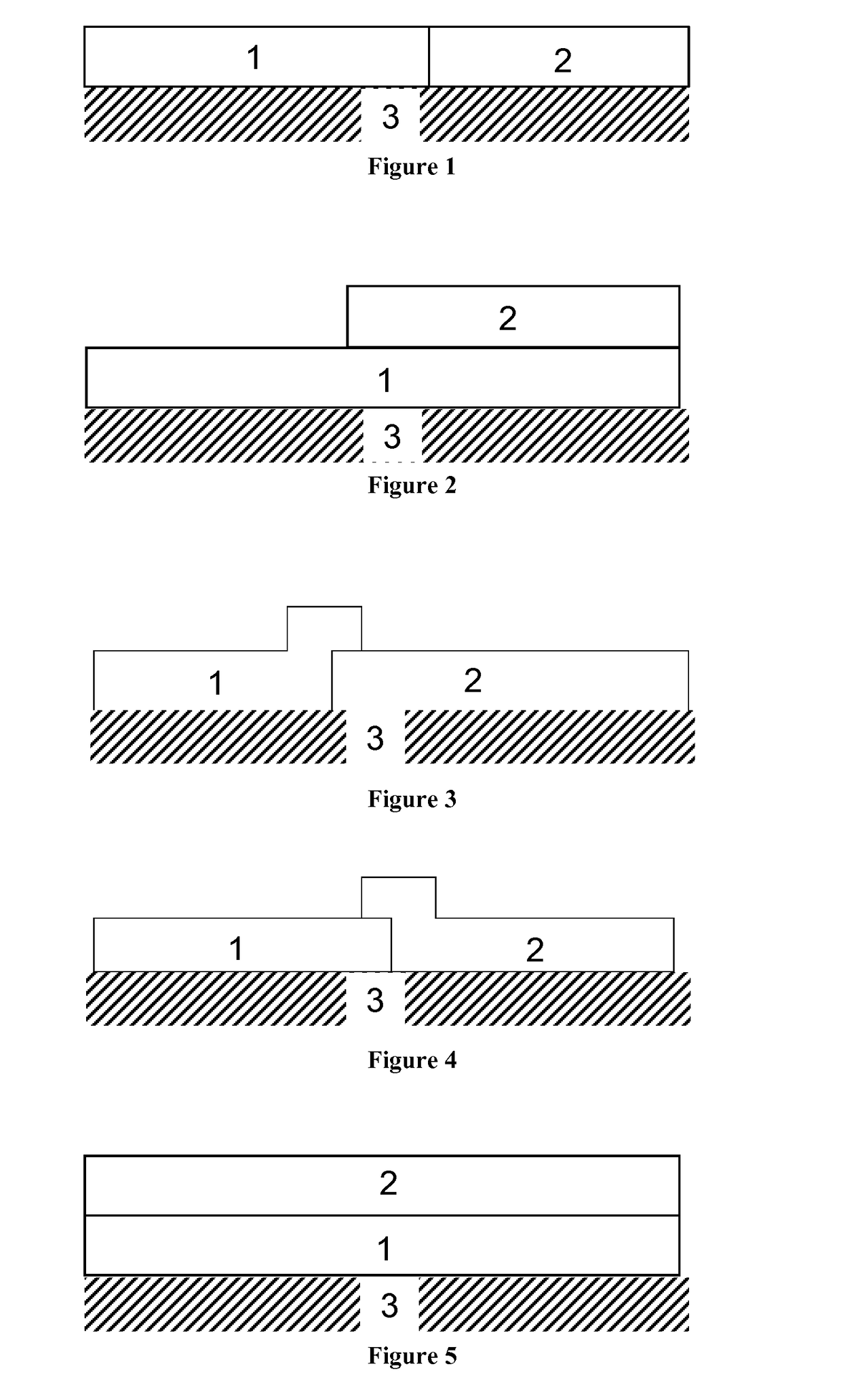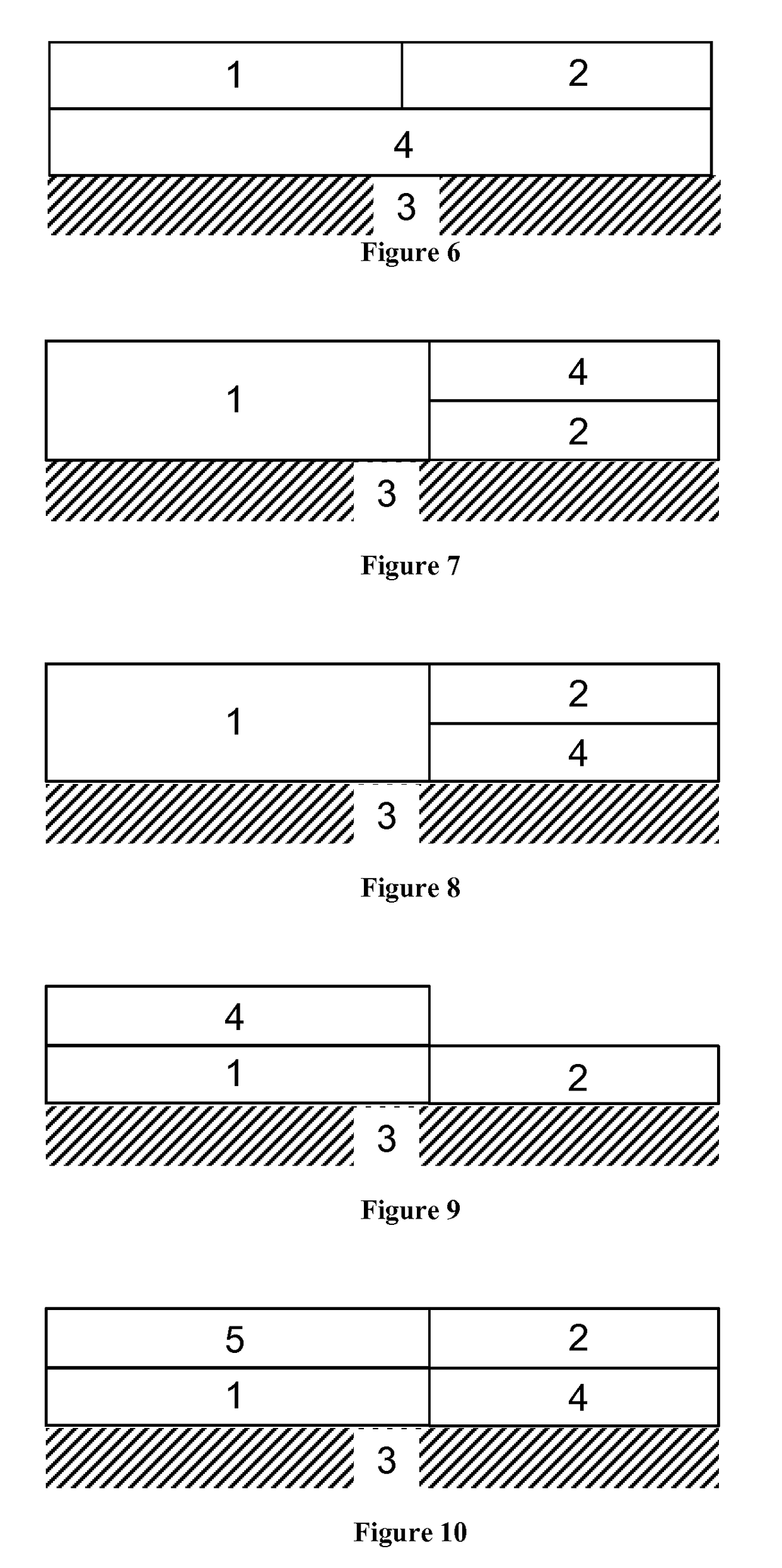Diesel oxidation catalyst and exhaust system
a technology of oxidation catalyst and diesel engine, which is applied in the direction of catalyst activation/preparation, metal/metal-oxide/metal-hydroxide catalyst, etc., can solve the problem of high price of platinum, achieve excellent oxidation activity, improve no oxidation activity, and reduce the amount of pt
- Summary
- Abstract
- Description
- Claims
- Application Information
AI Technical Summary
Benefits of technology
Problems solved by technology
Method used
Image
Examples
example 1
[0258]Silica doped alumina powder was slurried in water and milled to a d90<20 micron. Barium acetate was added to the slurry followed by appropriate amounts of soluble platinum and palladium salts. Beta zeolite was added such that the slurry comprised 78% silica doped alumina and 22% zeolite by mass. The slurry was then stirred to homogenise. The resulting washcoat was applied to the inlet channels of a cordierite flow through monolith having 400 cells per square inch using established coating techniques, and then dried.
[0259]A second slurry was prepared by taking silica-doped alumina powder and milling to a d90−3 and a manganese loading on the outlet coating of 100 g ft−3. The weight ratio of platinum to manganese was 3:5.
example 2
[0260]Silica doped alumina powder was slurried in water and milled to a d90<20 micron. Barium acetate was added to the slurry followed by appropriate amounts of soluble platinum and palladium salts. Beta zeolite was added such that the slurry comprised 78% silica doped alumina and 22% zeolite by mass. The slurry was then stirred to homogenise. The resulting washcoat was applied to the inlet channels of a cordierite flow through monolith having 400 cells per square inch using established coating techniques, and then dried.
[0261]A second slurry was prepared by taking silica-doped alumina powder and milling to a d90−3.
Experimental Results
Measurement of NO Oxidation
[0262]Core samples were taken from the catalysts of Examples 1 and 2. All cores were hydrothermally “aged” in an oven at 750° C. for 15 hours. Additional cores were taken and kept in the “fresh” condition (i.e. they were kept without any oven thermal treatment).
[0263]The catalytic activity was determined using a synthetic gas...
example 3
[0271]A first slurry was prepared as follows: silica-alumina powder was slurried in water and milled to a d90<20 micron. Soluble platinum salt was added followed by manganese nitrate. The mixture was stirred to homogenise.
[0272]The slurry was applied to the outlet end of a cordierite flow through monolith having 400 cells per square inch using established coating techniques. It was then dried and calcined at 500° C. The Pt loading on the part was 15 g ft−3. The manganese loading on the part was 50 g ft−3.
[0273]A second slurry was prepared by taking silica-alumina powder and milling to a d90−3 and a Pd loading of 15 g ft−3.
PUM
| Property | Measurement | Unit |
|---|---|---|
| weight | aaaaa | aaaaa |
| weight | aaaaa | aaaaa |
| mass | aaaaa | aaaaa |
Abstract
Description
Claims
Application Information
 Login to View More
Login to View More - R&D
- Intellectual Property
- Life Sciences
- Materials
- Tech Scout
- Unparalleled Data Quality
- Higher Quality Content
- 60% Fewer Hallucinations
Browse by: Latest US Patents, China's latest patents, Technical Efficacy Thesaurus, Application Domain, Technology Topic, Popular Technical Reports.
© 2025 PatSnap. All rights reserved.Legal|Privacy policy|Modern Slavery Act Transparency Statement|Sitemap|About US| Contact US: help@patsnap.com



